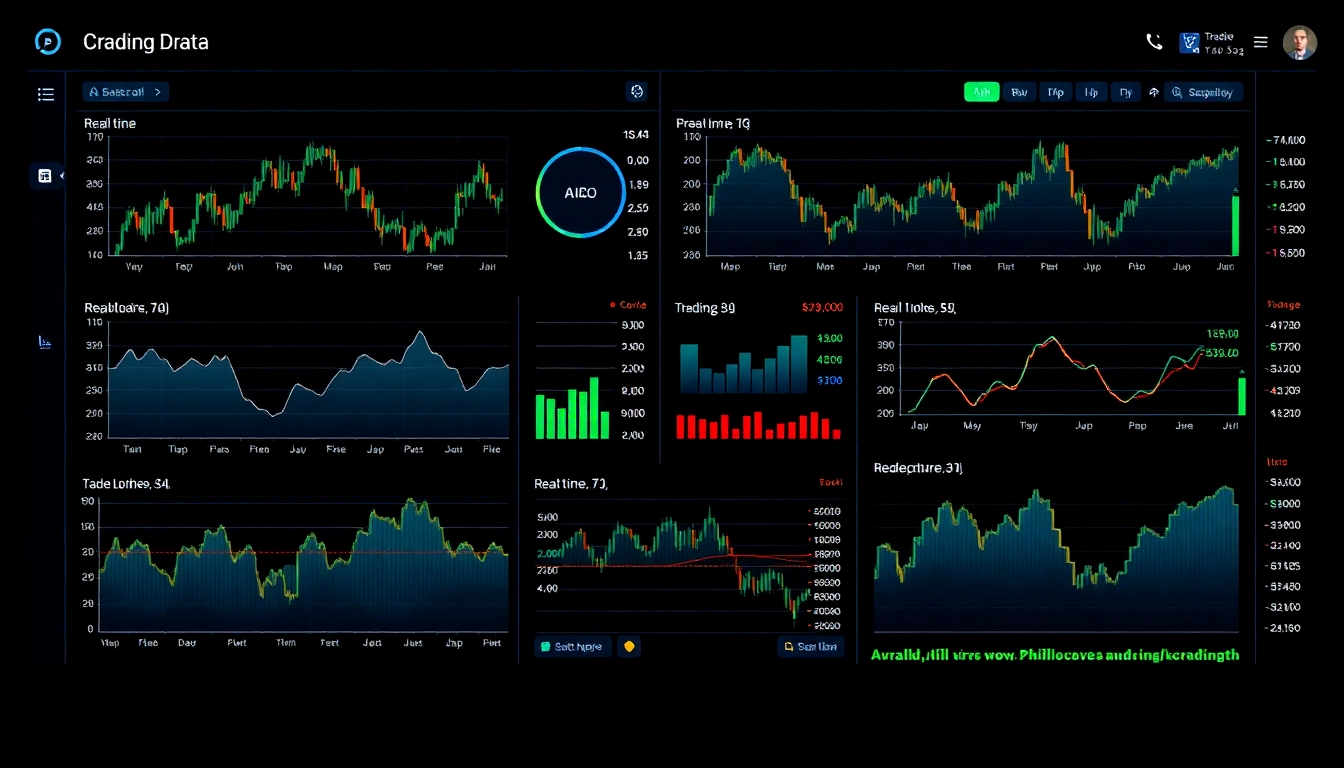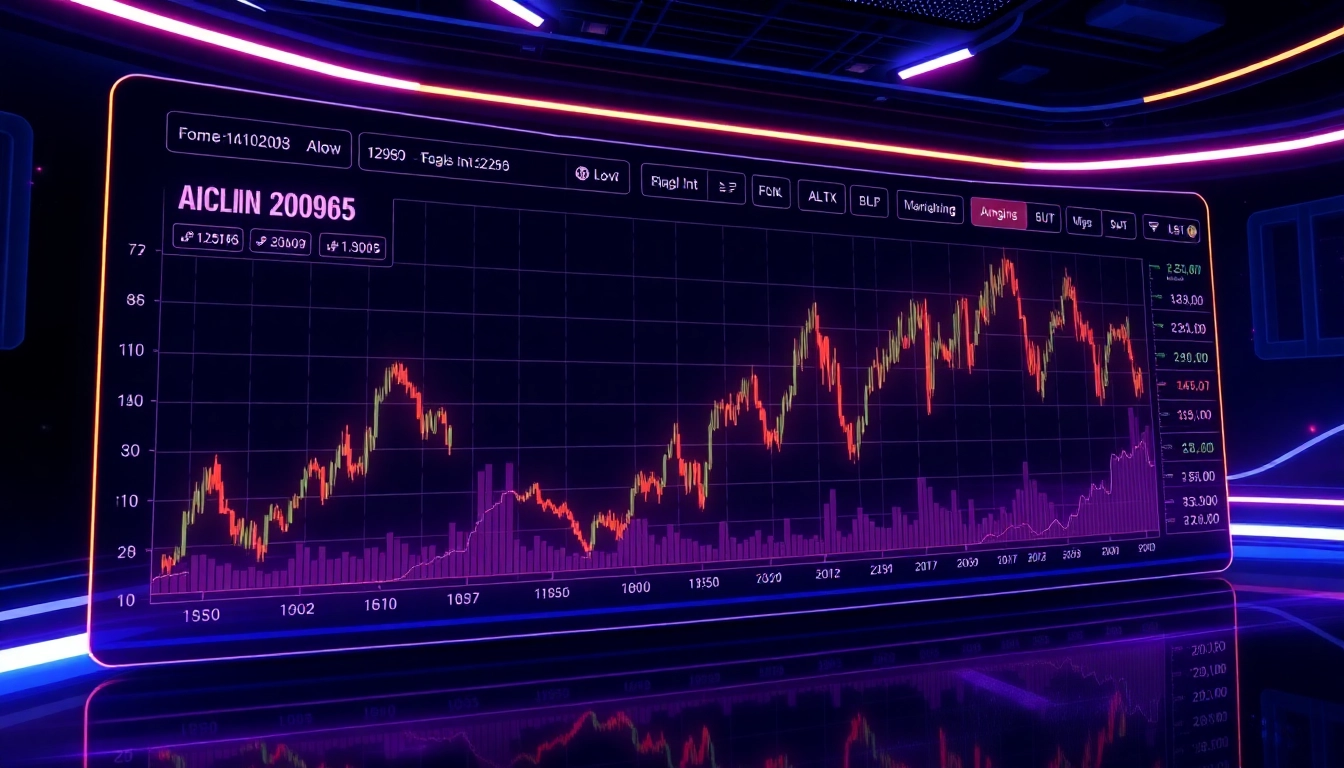
Introduction to Trading View and Its Role in Modern Trading
In today’s fast-paced financial markets, access to real-time data, advanced analytical tools, and a vibrant trading community is essential for success. Trading platforms have evolved beyond basic charting and order execution, transforming into comprehensive ecosystems that empower traders and investors alike. Among these platforms, trading view has established itself as a premier choice for both novice and professional traders seeking an all-in-one solution for market analysis, social interaction, and strategic planning.
What is Trading View and Why It Matters
Trading view is a multifaceted financial analysis platform that integrates advanced charting tools, technical indicators, and social features into a seamless interface. It serves as a digital hub where traders can monitor multiple markets—including stocks, cryptocurrencies, commodities, and forex—in a unified environment. Its significance lies in democratizing access to analytical tools previously available only to institutional traders, thus leveling the playing field for retail traders worldwide.
Recognized for its intuitive design and robust feature set, trading view is more than just a charting software; it is a social network for traders, fostering the exchange of ideas through community-sourced trading ideas, discussions, and collaborative analysis. This confluence of data, analytical tools, and community insights enhances decision-making processes and promotes continuous learning.
Key Features and Benefits for Traders
Trading view offers a comprehensive suite of features designed to optimize trading strategies:
- Advanced Charting Tools: Over 100 chart types, customizable timeframes, and a vast array of technical indicators enable detailed market analysis.
- Real-Time Market Data: Access to live price feeds across multiple asset classes ensures traders make informed decisions.
- Alert Systems: Customizable alerts notify traders of significant price movements or indicator signals, allowing timely actions.
- Social Integration: Community ideas, discussion feeds, and shared scripts foster collaborative learning and strategy development.
- Cross-Platform Accessibility: Available on web, desktop, and mobile devices, ensuring traders stay connected wherever they are.
- Automation and Trading Integration: Support for trading bots and API connectivity facilitates automated trading approaches.
These features collectively empower traders to perform comprehensive technical and fundamental analysis while fostering a community-driven environment for insights and shared strategies.
How Trading View Compares to Other Trading Platforms
While many trading platforms focus solely on order execution or market scanning, trading view distinguishes itself through its emphasis on analysis and community engagement. Unlike platforms such as MetaTrader or Thinkorswim, trading view’s cloud-based infrastructure allows for real-time collaboration, script sharing, and an extensive library of user-generated indicators. Its open API and scripting language, Pine Script, enable traders to develop custom indicators and trading strategies, enhancing flexibility.
Additionally, trading view’s social trading aspects surpass many competitors, providing a vibrant ecosystem where insights, trade ideas, and technical analysis are openly shared. This communal approach fosters continuous learning and helps traders refine their strategies based on collective wisdom.
Effective Ways to Use Trading View for Market Analysis
Utilizing Charting Tools and Indicators
The core of successful trading is precise technical analysis, and trading view excels in this area. Traders leverage a multitude of chart types—including candlestick, line, and Heikin-Ashi—to interpret market sentiment. Combining these with critical indicators such as Moving Averages, RSI, MACD, Bollinger Bands, and Fibonacci retracements creates a layered understanding of price action.
For example, a swing trader might utilize Fibonacci levels combined with RSI to identify potential reversal zones. The platform’s ability to overlay multiple indicators simultaneously allows for nuanced analysis, essential for timing entries and exits.
Setting Up Alerts and Watchlists
Effective market monitoring hinges on timely alerts. Trading view’s alert system can notify traders via email, SMS, or on-app notifications when certain criteria—such as price levels, indicator signals, or technical patterns—are met. These alerts minimize the need for constant manual observation and help traders capitalize on emerging opportunities.
Additionally, customizable watchlists organize assets of interest, enabling swift navigation across multiple markets. For instance, a trader tracking tech stocks, cryptocurrencies, and forex pairs can keep all relevant assets within easy reach, setting specific alerts for each based on their unique strategies.
Incorporating Community Ideas and Social Trading
One of the unique strengths of trading view is its thriving community. Traders publish ideas, share chart analyses, and discuss market developments globally. Reviewing popular ideas or analyzing shared scripts can inspire new trading strategies or confirm one’s analytical assumptions.
Engaging with community insights helps traders stay informed about market sentiment, emerging trends, and practical trading techniques. For example, a trader might observe a widely shared bullish breakout idea and use it as a basis for their own analysis, adding their insights before executing a trade.
Developing Trading Strategies with Trading View
Technical Analysis Techniques
Building effective trading strategies begins with mastering technical analysis. Utilizing chart patterns such as head and shoulders, double tops/bottoms, and pennants, combined with trendline analysis, enhances the trader’s ability to anticipate market moves.
Trading view’s visual tools help identify these patterns quickly, reinforced by indicators like volume or oscillators, which can validate or invalidate potential setups. For instance, a rising wedge pattern confirmed by decreasing volume may signal a bearish reversal, presenting a shorting opportunity.
Fundamental Analysis Integration
Although primarily chart-focused, trading view also offers fundamental data feeds, including earnings reports, economic calendar events, and macroeconomic indicators. Incorporating this data into technical analysis provides a comprehensive view, especially when trading stocks or currencies affected by news events.
For example, a trader monitoring an upcoming Federal Reserve interest rate decision may combine technical support levels with expectations derived from economic data, enabling more informed decisions.
Backtesting and Strategy Optimization
Trading view’s Pine Script language allows traders to develop and backtest automated strategies against historical data. This process reveals the robustness of a strategy and helps optimize parameters before real capital is at risk.
Backtesting results guide traders in refining entry/exit rules, stop-loss levels, and position sizes, increasing the likelihood of profitability. Continuous testing and adjustment form the backbone of systematic trading within the trading view environment.
Maximizing Profitability with Trading View Features
Automated Trading and Bots
Advanced traders utilize trading view’s scripting and API capabilities to develop trading bots that execute strategies automatically. These bots can monitor markets around the clock, executing trades based on predefined signals, leading to more disciplined and emotion-free trading.
Integration with brokers and platforms enables seamless automation, provided that traders test their algorithms thoroughly to prevent undesired losses.
Risk Management and Stop-Loss Placement
Effective risk management is essential for long-term profitability. Trading view’s analytical tools assist in identifying critical support and resistance levels, which serve as logical stop-loss points. Dynamic alerts notify traders when prices approach these levels, allowing timely adjustments.
Implementing proper stop-loss strategies prevents catastrophic losses, especially during volatile market conditions.
Performance Tracking and Analytics
Continuous monitoring of trading performance is facilitated by trading view’s analytics dashboards and trade journal features. Tracking metrics such as win rate, profit factor, and drawdown helps traders evaluate the effectiveness of their strategies over time.
Data-driven insights inform necessary adjustments, fostering a disciplined and analytical approach to trading.
Best Practices for Building a Trading View Routine
Consistent Monitoring and Adjustments
Successful trading hinges on discipline and regular review. Establishing a routine, such as morning market scans and evening performance evaluations, ensures traders stay aligned with their strategies.
Adjusting watchlists, refining indicators, or revisiting trade hypotheses based on new data promotes continuous improvement.
Leveraging Community Insights for Better Decisions
Engaging actively with community ideas, following top traders, and participating in discussions foster a broader understanding of market dynamics. Such social interactions can highlight overlooked opportunities or warn against emerging risks.
Continuous Learning and Platform Updates
Trading view regularly updates its platform, adding new features, indicators, and data support. Staying informed about these updates and embracing new tools enhances analytical capabilities. Combining ongoing education with adaptive strategies creates a resilient trading routine.





